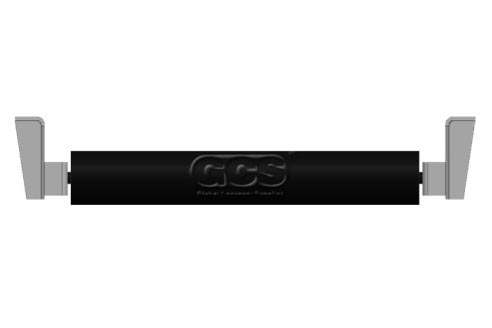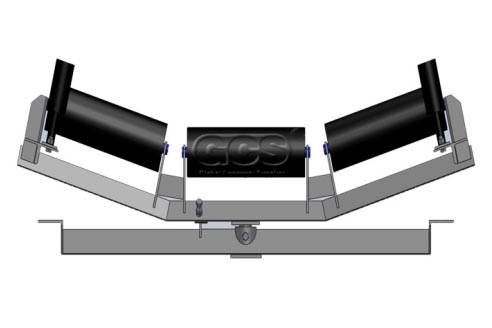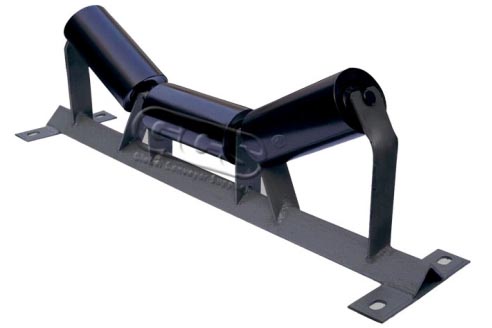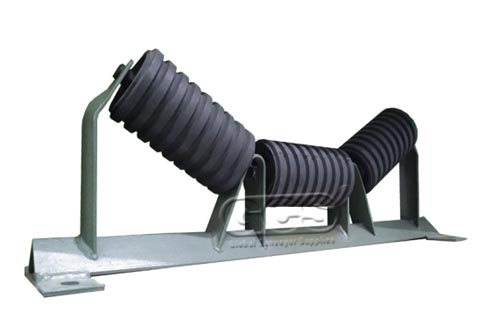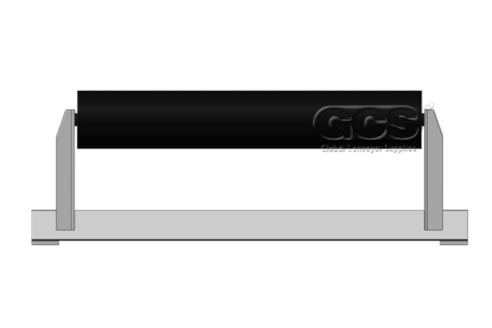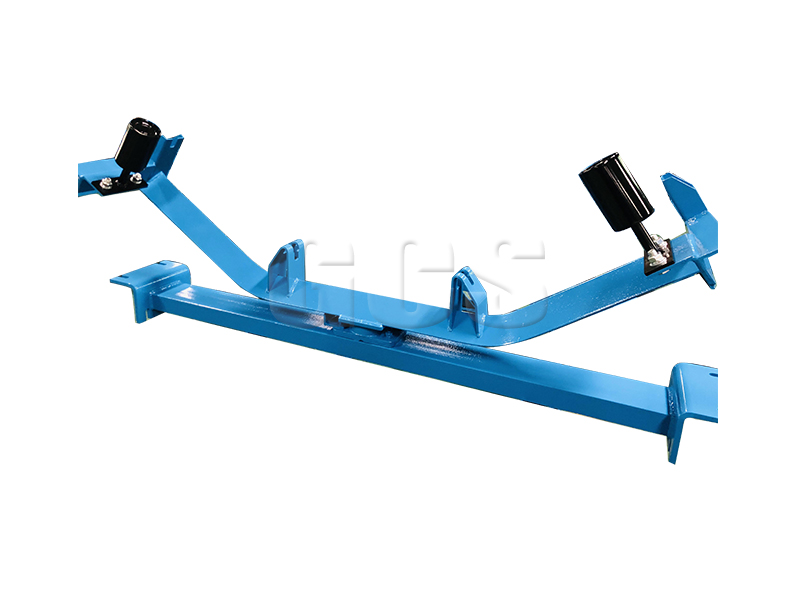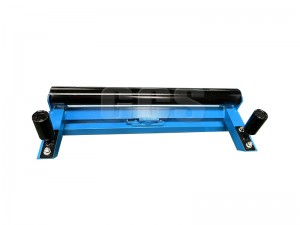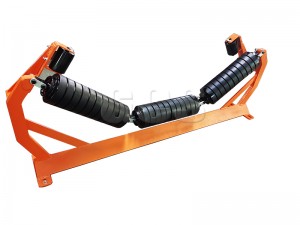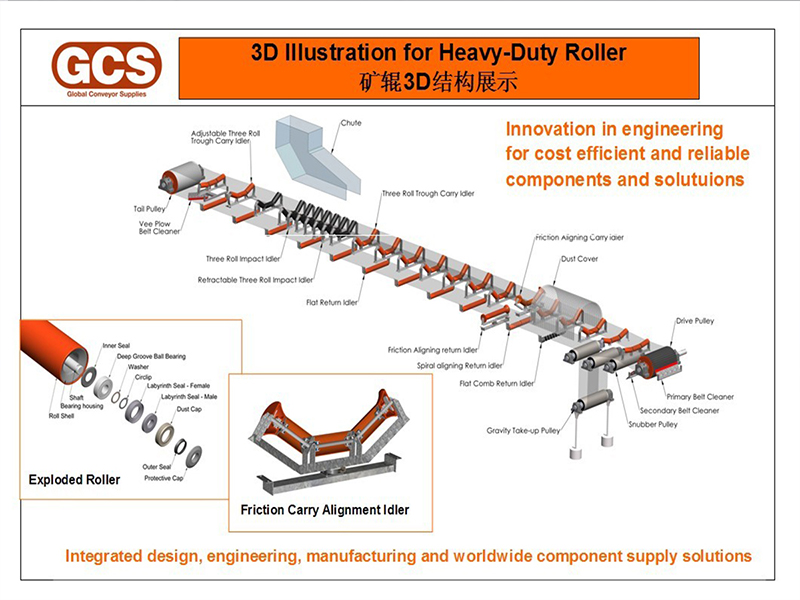
1. Overview As the main component of the conveyor, the idler, is distributed under the belt conveyor belt and is mainly used to lift the belt and bear the load. Cushioning, deflection, and cleaning the belt are also its main functions. Therefore, its quality and correct selection play an important role in the service life, safe and stable operation and energy consumption of the entire belt conveyor.
2. Classification of idlers Classified by use
| Classification by use | ||
| Classification | Type | Range of Application |
| Carrier rollers set | Trough rollers | Used to carry conveyor belts and the material on them. |
| Trough forward tilting rollers | Used to carry the conveyor belt and the material on the belt and to prevent the belt from running out of position. | |
| Transition rollers | Used to reduce the stress on the edge of the conveyor belt and to avoid spillage. | |
| Impact idler | Used at the receiving point of the conveyor to cushion the impact of falling material on the conveyor. | |
| Alignment rollers | Used to correct the belt when it deviates from the centre line, thus preventing damage to the belt. | |
| Flat upper rollers | Used to carry the conveyor belt and material on belt conveyors where no groove angle is required. | |
| Return roller set | Return rollers Flat bottom rollers | Used to support the conveyor belt on the return journey. |
| "V" rollers, "V" forward rollers, "reverse V" rollers | To support the belt on its return journey and to prevent the belt from running off. | |
| V-combed rollers, flat comb rollers, spiral rollers | Used to sweep the belt load to avoid sticking material. | |
| Friction bottom centring rollers, conical bottom centring rollers | Used to correct the deflection of the return conveyor belt. | |
3. Service environment
| Service environment | ||
| Classification | Type | Range of Application |
| Special environments | HDPE roller | As a new generation of common metal rollers, they are widely used in dusty and corrosive places. |
| Wear-resistant ceramic rollers | Acid-, alkali-, oxidation- and abrasion-resistant, especially suitable for the metallurgical industry where there is a lot of dust and a harsh environment. | |
| Nylon rollers | Used to reduce the stress on the edge of the conveyor belt and to avoid material spillage. | |
| Rubber covered rollers | Used for cushioning the material point of the conveyor in places where friction is high and corrosiveness is strong. | |
| Phenolic resin rollers | For use in high friction, waterlogged environments. | |
| Sand-bonded wear-resistant rollers | For general belt conveyors with high friction. | |
| Special environments Stainless steel rollers | For special requirements, e.g. on conveyors for foodstuffs, pharmaceuticals or underneath the iron remover on general conveyors, to prevent the rollers from being sucked up by the iron remover. | |
| Hot-dip galvanized rollers | Suitable for marine climates, with corrosive gases to steel and strong UV environments. | |
| Wear-resistant cast iron rollers | For use in dusty, corrosive, and abrasive locations | |
| General environment | Q235 steel rollers | Widely used for conveyors working in general environments |
| Note: Special environment rollers can also be used on belt conveyors in the general environment to improve the overall performance of the conveyor. |
||
3. Performance of rollers
Classification Item Performance indicator
1 Service life Damage rate <8% in 30,000 hours of normal use.
2 Slotted forward tilting rollers Small rotational resistance, factory laboratory test: ≤0.010; under engineering use conditions: ≤0.020.
3 Transition roller's Diameter jump less than 0.3mm
4 Dust and water ingress of rollers Dustproofness and waterproofness are better than national standards
The idler produced by our company has a reasonable product structure and long service life and can work normally in harsh environments such as -40 °C ~ 70 °C and dust, and water.
4. Selection of idler When selecting idler, attention should be paid to its smooth appearance, no obvious defects, and the relationship between idler roll diameter and bandwidth
| OD\BandWidth | 500 | 650 | 800 | 1000 | 1200 | 1400 | 1600 | 1800 | 2000 | 2200 |
| 89 | √ | √ | √ | |||||||
| 108 | √ | √ | √ | √ | √ | |||||
| 133 | √ | √ | √ | √ | √ | √ | √ | |||
| 159 | √ | √ | √ | √ | √ | √ | √ | √ | ||
| 194 | √ | √ | √ | √ | ||||||
| 219 | √ |
The relationship between idler diameter and belt speed (when selecting idler roller, the speed does not exceed 600r/min)
|
OD\mm |
0.8 |
1 |
1.25 |
1.6 |
2 |
2.5 |
3.15 |
4 |
5 |
6.5 |
|
Idler speed r/min |
||||||||||
|
89 |
172 |
215 |
268 |
344 |
429 |
537 |
||||
|
108 |
142 |
177 |
221 |
283 |
354 |
442 |
557 |
|||
|
133 |
144 |
180 |
230 |
287 |
359 |
453 |
575 |
|||
|
159 |
120 |
150 |
192 |
240 |
300 |
379 |
481 |
601 |
||
|
194 |
123 |
158 |
197 |
246 |
310 |
394 |
492 |
|||
|
219 |
275 |
349 |
436 |
567 |
||||||
GCS reserves the right to change dimensions and critical data at any time without any notice. Customers must ensure that they receive certified drawings from GCS prior to finalizing design details.
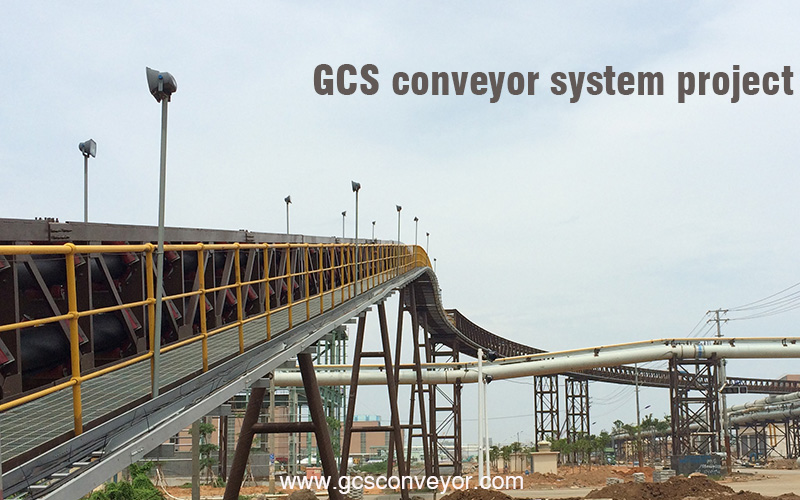
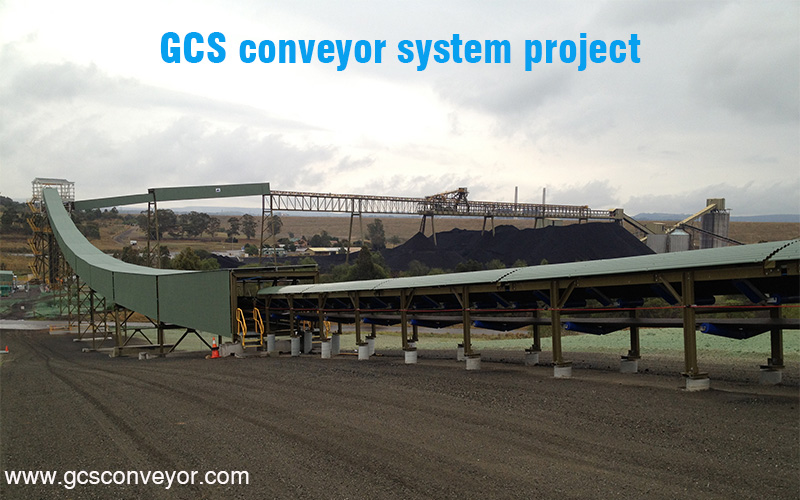
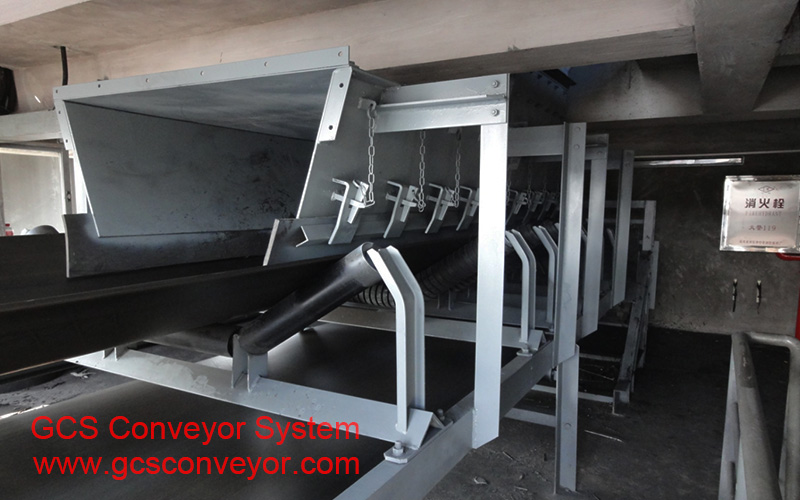
Related product
Post time: Feb-07-2023

